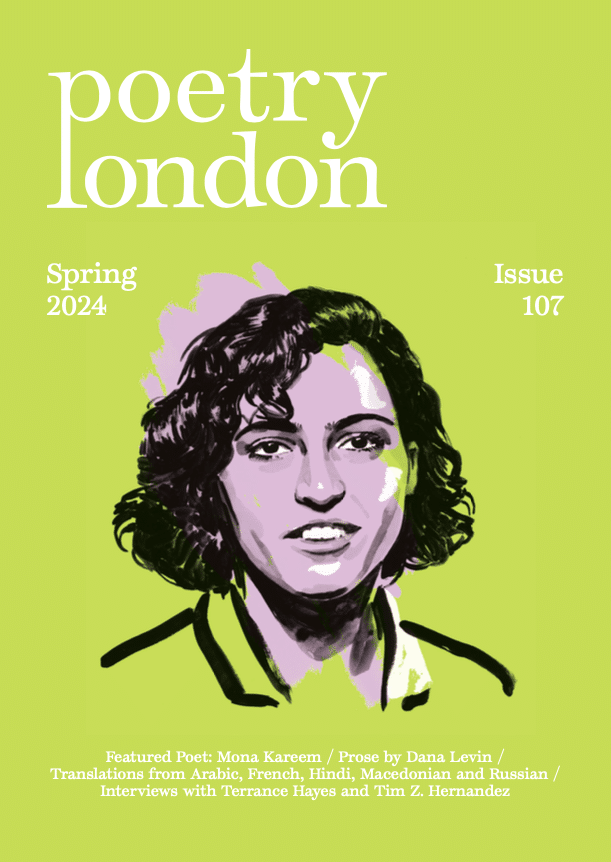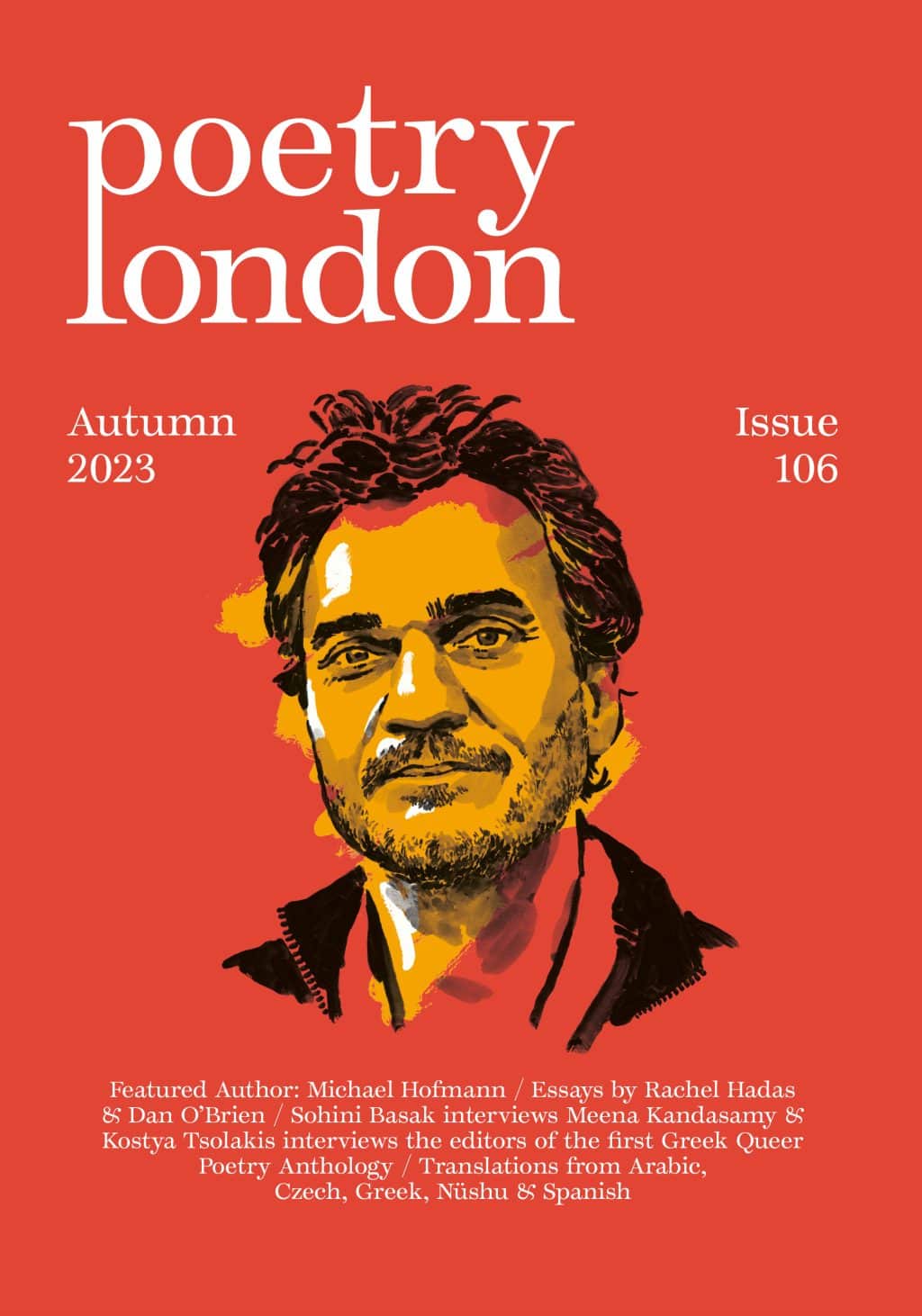“Mixing Memory and Desire”: Collecting the centenary in poetry
Sammy Jay
The year 1922 was ushered in with a megaphone. On 24 January, Edith Sitwell held the private debut of Façade, her modernist poem, with avant-garde musical accompaniments by the little-known teenager composer William Walton. At the first public performance the following year at Aeolian Hall, the critics were flabbergasted. Edith sat with her back to the audience, reciting through her Sengerphone. Walton called it a “disaster” and the promising young playwright Noël Coward famously staged a walkout. Scarcely a week after Façade’s debut, while the thousand blue-wrappered volumes of the first edition of James Joyce’s Ulysses were hitting the Parisian bookshelves in early February, in a castle overlooking the Adriatic, Rainer Maria Rilke was pouring out his Duino Elegies and the Sonnets to Orpheus in only ten days – his legendary “savage creative storm”.
Soon more modern masterpieces would join the throng of this literary annus mirabilis: Fitzgerald’s The Beautiful and Damned was published in March; Robert Frost, one morning that June, wrote “Stopping by Woods on a Snowy Evening” – a poem that still has miles to go before it sleeps; Virginia Woolf released Jacob’s Room in October, the first of many ground-breaking works published through her own Hogarth Press; and in the same month came what many consider the major event in 20th century poetry, the first appearance of T. S. Eliot’s The Waste Land. This poem, which reaches towards regeneration while making great show of negating it, remains mesmerising, even now in the year of its hundredth birthday. “What are the roots that clutch, what branches grow / out of this stony rubbish?”, Eliot asks gloomily, yet his “heap of broken images” has provided an infinite resource for subsequent generations of poets, and the following century has shown his “handful of dust” to be remarkably fertile soil.
My work as the literature specialist for London rare book dealers Peter Harrington often has me thinking along these lines, especially when such centenaries come around. Why do we keep returning to these texts? Why do we collect them? As with any genre of collecting as vast, rich and inspiring as poetry, homing in on the works, literary movements or periods that personally move you is perhaps the hardest first step. But the year 1922 – and the exceedingly creative interwar years surrounding it – would be a propitious place to start. There are many modern masterpieces that offer a vivid snapshot of that effervescent time, and holding a first edition of a book, in the condition in which it was “born” a hundred odd years ago, illustrates most perfectly just how valuable and alive these books still are.
Collectors often come to me in search of a first edition of The Waste Land, and I have to ask a troublesome question: “which one?”. For there are in fact several first editions, each interesting and worthy in its own right. The strict first appearance was in October, in the debut issue of The Criterion magazine of which Eliot was the editor, with the poem finding itself in interesting company alongside the likes of Dostoevsky (in a collaborative English translation by Virginia Woolf and S. S. Koteliansky) and Hermann Hesse (whose novel Siddhartha was yet another important book born in 1922).
It is one of the quirks of the rare book market, that collectors tend to pursue their favoured poems and texts in book form, preferably hardback, over any prior appearances alongside other texts in flimsy magazine format. For The Waste Land, this happened in December 1922, and back in Eliot’s native America. The New York publishers Boni & Liveright, chivvied by that indispensable literary impresario Ezra Pound (whom they had published the previous year), printed Eliot’s masterpiece in a handsome hardback edition of 1,000 copies. If you find one of these, and if it is one of the first-issued 500 or so (distinguished by flexible boards you can, gently, bend), and if it still has its original dust jacket, which would normally have been discarded at the point of sale, then it can be a very valuable book. As usual with collecting, much depends on condition. Copies in pristine dust jackets command the highest value and are much sought after in the collecting world. In the case of The Waste Land, a small number of near perfect copies were discovered in later decades, emerging, fresh as the winter’s day they were born, from the estate of Eliot’s old college friend – the poet and editor Schofield Thayer. It was Thayer who had arranged to give The Waste Land its first American magazine publication, and second printing overall, in the November 1922 issue of The Dial, of which he was the editor. Thayer also made sure Eliot was awarded The Dial’s annual prize for “services to letters”, granting him $2,000. Eliot certainly had useful friends.
There is, however, yet another first edition of The Waste Land, which is in some ways the most interesting. It was Virginia Woolf’s Hogarth Press which in January 1923 gave Eliot’s poem its first book edition in Britain, in a small edition of under 500 hand-printed copies, with a cover decorated in beautiful blue marbled paper prepared, it is thought, by her sister the artist Vanessa Bell. This fragile production is now scarce, especially in nice condition, and is sought after not just by poetry enthusiasts but also by collectors of the Hogarth Press (who are legion): copies can fetch considerable sums. Eliot’s life and work was centred in London, and it was clearly this British edition that circulated among his contemporaries. In my experience, all the most significant copies presented and inscribed by Eliot himself (for example to Paul Valery or Wyndham Lewis), as well as most copies with any close or interesting provenance, were from this Hogarth Press edition. Perhaps the most intriguing of these to have passed through my hands was one owned by the violinist Olga Rudge, not least because the copy ended up in the library of her lover Ezra Pound, at the Tyrolean castle of Brunnenberg. Pound, who had famously beaten Eliot’s sprawling early draft of the poem into shape and been deferentially acknowledged as its “miglior fabbro” [better maker], spent his later years scribbling the last of his Cantos in the library at Brunnenberg, so this was a thrilling provenance.
For those wishing to collect around The Waste Land, there are some compelling precursors to the themes preoccupying Eliot. One of them is a great rarity, which I have only seen once: Paris, a Poem by Hope Mirrlees. Fascinatingly, this was also published by Virginia Woolf’s Hogarth Press, May 1920, in an edition of only 175 copies that has proven, quite literally, vanishingly small. It was barely noticed by contemporary readers and was not reprinted in Mirrlees’s lifetime. It has only recently been reappraised as “modernism’s lost masterpiece”. This experimental poem pioneered the day-in-the-life-of-a-city trope, soon to be explored more famously by Joyce in Ulysses, Eliot in The Waste Land, or Woolf in Mrs Dalloway. Many are the hours I have spent striding down the aisles of book fairs, or leafing through catalogues, hoping to catch another glimpse of its mischievously harlequin-coloured cover.
Another poet who seems to have anticipated Eliot was the American Edna St. Vincent Millay. Her Ballad of the Harp Weaver (another in the 1922 club) won Millay the Pulitzer Prize for poetry, but it was her short poem “Spring”, which opens the collection Second April, published 1921, that really interests me. “To what purpose, April, do you return again? / Beauty is not enough…”, it opens, and in 18 short, stark lines does a good deal of the heavy lifting that Eliot would be better remembered for. I only encountered this poem recently and am pleased to have found a first edition in its scarce dust jacket that we can offer our collectors. It seemed an important inclusion, and I can’t get its ending out of my head: “Life in itself / is nothing, / an empty cup, a flight of uncarpeted stairs. / It is not enough that yearly, down this hill, / April / comes like an idiot, babbling and strewing flowers.”
Eliot is very unlikely to have copied Millay. It is Chaucer who would have been in both their minds: a shared desire, after the horrors of First World War and the Spanish Flu pandemic, to subvert the well-known joyful opening of his Canterbury Tales, in which April’s sweet showers are envisioned bringing life and regrowth back to the earth after another hard winter. Spring itself, however, is not so easily subverted, and Chaucer’s text is now over 600 years young. Who knows how, given another half millennium, the seeds sown in 1922 will be flourishing? One thing’s for sure: they will outlive us all.
Sammy Jay is a specialist in literature at Peter Harrington, the largest antiquarian book dealer in Europe. He has been published in The Book Collector and Literary Review and has published some poetry.

